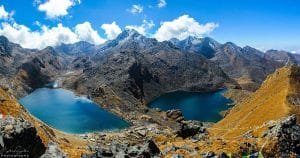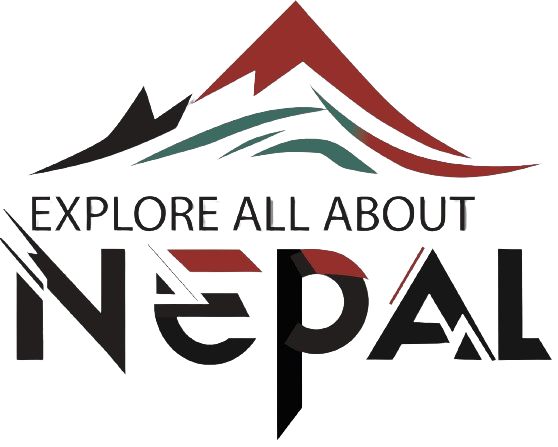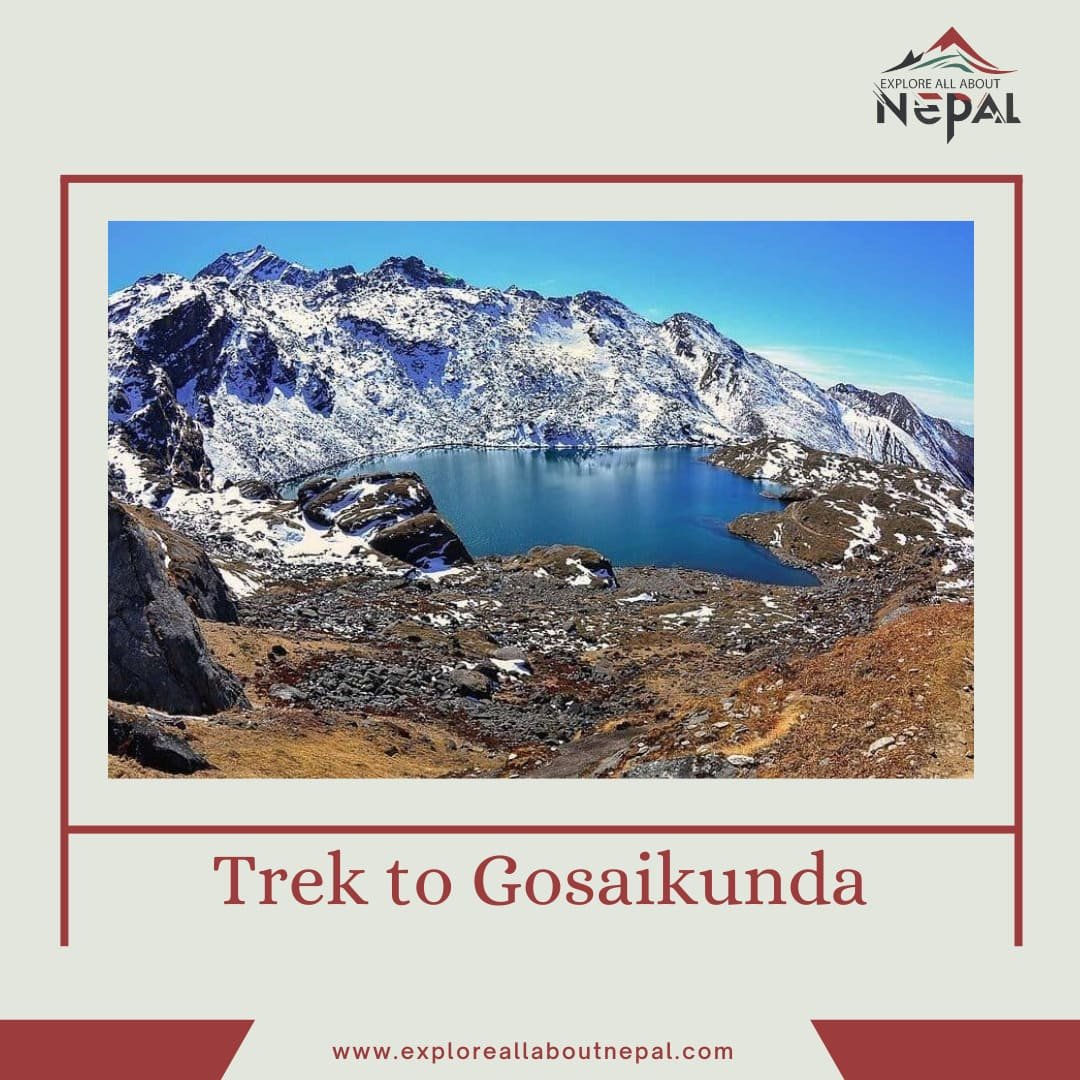Trek to Gosaikunda is a high-altitude trekking journey in Nepal that leads to Gosaikunda Lake, a sacred glacial lake located at 4,380 meters (14,370 feet) in the Langtang National Park. This trek is known for its breathtaking Himalayan views, rich biodiversity, cultural significance, and spiritual ambiance.
Gosaikunda, a breathtaking alpine lake nestled in Nepal’s Langtang National Park, is a must-visit for both trekkers and spiritual seekers. Situated at an altitude of 4,380 meters (14,370 feet), this sacred lake is believed to have been created by Lord Shiva and attracts thousands of pilgrims during the Janai Purnima festival. The trek to Gosaikunda offers mesmerizing landscapes, rich biodiversity, and a blend of cultural and spiritual experiences.
If you’re planning a trek to Gosaikunda, this detailed guide covers everything you need to know, including trek routes, costs, permits, itinerary, and essential travel tips.

Key Features of the Gosaikunda Trek
- Stunning Glacial Lakes: Gosaikunda and surrounding lakes such as Bhairav Kunda and Saraswati Kunda.
- Cultural and Religious Significance: A sacred pilgrimage site for Hindus and Buddhists.
- Breathtaking Views: Panoramic views of Langtang Lirung, Ganesh Himal, and Manaslu.
- Diverse Landscapes: From lush green forests to alpine meadows and rocky trails.
- Wildlife Encounters: Chance to spot red pandas, Himalayan tahr, and various bird species.
- Moderate Difficulty: A rewarding yet moderately challenging trek, perfect for adventure lovers.
Trekking Routes to Gosaikunda
There are multiple routes to reach Gosaikunda, with the most popular being the Dhunche-Gosaikunda Route and the Sundarijal-Gosaikunda Route.
1. Dhunche-Gosaikunda Route (Standard Route)
This is the most common and preferred route for trekkers.
- Starting Point: Dhunche (1,960m)
- Duration: 5-7 days
- Difficulty: Moderate to challenging
- Best For: Those looking for a direct approach with scenic landscapes and cultural exposure
2. Sundarijal-Gosaikunda-Helambu Route (Longer Trek)
For those who want an extended adventure, this route covers more of the Langtang region.
- Starting Point: Sundarijal (1,350m) near Kathmandu
- Duration: 8-10 days
- Difficulty: Moderate to challenging
- Best For: Trekkers looking for a diverse trail with lush forests, rivers, and rural settlements
Detailed Trek Itinerary
Option 1: Dhunche-Gosaikunda Trek (5-7 Days)
Day 1: Kathmandu to Dhunche (1,960m)
- Drive from Kathmandu to Dhunche (6-7 hours by bus or jeep)
- Enjoy scenic views of Trishuli River and mountains
- Stay overnight in a teahouse in Dhunche
Day 2: Dhunche to Chandanbari (Sing Gompa) (3,330m)
- Trek duration: 5-6 hours
- Pass through dense forests and traditional Tamang villages
- Visit Sing Gompa, a famous Buddhist monastery
- Stay overnight in a teahouse
Day 3: Chandanbari to Gosaikunda (4,380m)
- Trek duration: 5-6 hours
- Gradual ascent through alpine landscapes
- Arrive at Gosaikunda Lake, explore the sacred site
- Overnight stay at a teahouse
Day 4: Gosaikunda to Chandanbari (Return)
- Trek down the same route
- Overnight stay in Chandanbari
Day 5: Chandanbari to Dhunche and Drive Back to Kathmandu
- Descend to Dhunche and take a vehicle back to Kathmandu
Option 2: Sundarijal-Gosaikunda-Helambu Trek (8-10 Days)
For those who prefer a longer trek, this itinerary includes the Helambu region, covering beautiful villages such as Tharepati and Melamchi Gaon.
Cost Breakdown of the Gosaikunda Trek
| Expense | Estimated Cost (in USD) |
|---|---|
| Transport (Kathmandu-Dhunche-Kathmandu) | $20-$30 |
| Accommodation (Teahouses) | $5-$10 per night |
| Food (Breakfast, Lunch, Dinner) | $15-$25 per day |
| Permits (TIMS & Langtang National Park Entry) | $30-$35 |
| Guide (Optional) | $25-$30 per day |
| Porter (Optional) | $20-$25 per day |
| Miscellaneous (Snacks, Water, Tips) | $5-$10 per day |
| Total Estimated Cost | $200-$350 (budget) |
Required Permits for the Gosaikunda Trek
- Langtang National Park Entry Permit – $30 per person
- TIMS (Trekkers’ Information Management System) Card – $10 per person
- Shivapuri National Park Entry Permit (If trekking via Sundarijal) – $5 per person
Permits can be obtained from the Nepal Tourism Board office in Kathmandu.
Best Time to Trek to Gosaikunda
- Spring (March-May): Best season with blooming rhododendrons and clear skies.
- Autumn (September-November): Ideal weather and stunning mountain views.
- Winter (December-February): Extremely cold with snowfall; only for experienced trekkers.
- Monsoon (June-August): Risk of landslides, but best for pilgrims during Janai Purnima.
Essential Travel Tips
- Acclimatization is Key: Stay hydrated and take your time to avoid altitude sickness.
- Pack Wisely: Essentials include warm clothing, trekking boots, first-aid kit, and a sleeping bag.
- Carry Cash: ATMs are unavailable along the trekking route.
- Respect Local Culture: Be mindful of traditions, especially in religious areas.
- Hire a Guide/Porter: Helps in navigation and carrying heavy loads, especially for first-time trekkers.
Highlights
Conclusion
The Gosaikunda trek is an unforgettable journey that combines adventure, spirituality, and natural beauty. Whether you take the shorter Dhunche route or the longer Sundarijal-Helambu route, the trek offers an incredible experience with mesmerizing landscapes, warm hospitality, and rich cultural heritage. By planning properly and following the travel tips provided, you can make the most of your Gosaikunda adventure.
Ready to embark on this trek? Start preparing now and experience the magic of Gosaikunda!


